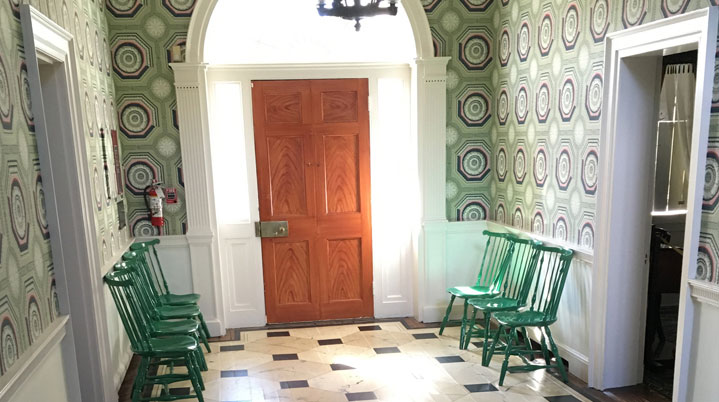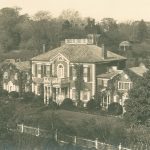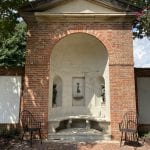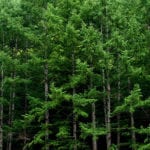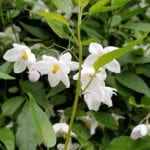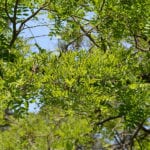Dumbarton House is fine example of Federal period architecture. Our nation’s early years, from 1790 to 1830, generally define the Federal period. During this time, a keen sense of nationalism arose, and government leaders such as Thomas Jefferson looked to the classical ages of Greece and Rome for inspiration in forging an identity for the new American Republic.
Architecture: Federal style in America, like Adam style in England, evolved from the earlier Georgian style, which was characterized by symmetry and balance, both inside and out. From the outside, Dumbarton House presents a large central block, balanced by smaller two-story wings on each side. The wings in turn are connected to the central block by matching hyphens. The large windows in the central block and the semicircular fanlight over the main entrance are features that made an appearance only during the Federal period however.
Inside Dumbarton House, rooms of the same dimensions face the street from either side of the central passage, and this symmetry is repeated in the two rooms facing the garden at the rear of the house. Architects of the period experimented with geometric shapes beyond the rectangle, however, and the bowed walls projecting into the garden are distinctly Federal in style. (Washington, D.C.’s Octagon House, designed by William Thornton, the first architect of the United States Capitol, is another example of this experimentation with shapes.) Pilasters replace ornamental columns, and delicate plaster and composition work often contain classical motifs widely employed during this time.
Decorative arts: During the Federal period, there is a movement away from the elaborate carving and rococo curves and flourishes previously found on furniture, silver, and other objects. Now, straight lines, smooth surfaces, and contrast achieved not by means of the shadows of carved wood but with inlay of contrasting woods, and even with paint, characterize the furniture. Pieces tend to be smaller and lighter for both practical and aesthetic reasons. Social life of the period is characterized by a greater degree of informality, so that furniture is rearranged in rooms as the occasion and the company require. As in the architecture, classical figures, festoons, urns, and bellflowers are all freely used in the decorative arts. In the later years of the Federal period (1810-1830), furniture becomes heavier, and rather than merely borrowing motifs from the classical age, forms are copied wholesale, so that we find the ancient Greek klismos chair and curule stool. Three dimensional carving also makes a reappearance, with caryatids, dolphins, and eagles in abundance.

